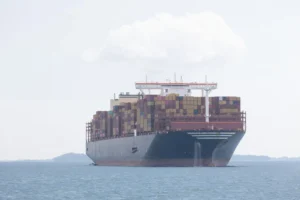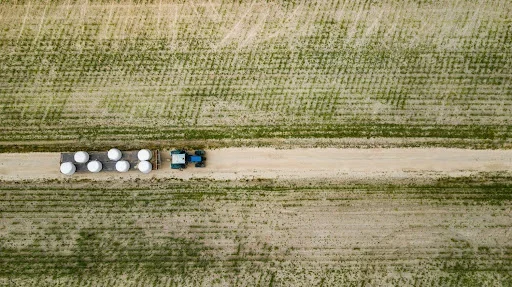Disclaimer: This article is for informational purposes only and does not replace professional advice. Please consult experts before making decisions.
The agricultural supply chain isn’t just a logistical framework; it’s the invisible backbone of global food security. It links every node of food production and distribution: from rural growers and seed suppliers to processing plants, export terminals, and grocery shelves. This complex ecosystem governs how agricultural resources become food in your pantry. Traditionally, however, these systems have struggled with inefficiency, relying on manual paperwork, delayed communications, and siloed operations that fail to adapt to fast-changing conditions.
These gaps lead to spoiled harvests, excessive waste, and lost revenue. The FAO reports that approximately 13% of global food production is lost or wasted, much of it during supply chain transitions, specifically after harvest and before retail. These inefficiencies are particularly damaging in developing economies where logistics infrastructure is limited. But the tide is turning. New digital tools, led by crop monitoring software, are rewriting the rulebook.
At the heart of this transformation is the effectiveness of an agriculture platform in farming, which enables centralized data management, automated alerts, and geospatial insights. From real-time agriculture monitoring to blockchain-secured traceability, modern supply chains are shifting from reactive to predictive, ensuring smarter decisions, faster delivery, and less waste. Let’s explore this topic further!
Why Technology Is Indispensable to Modern Agricultural Logistics Chains
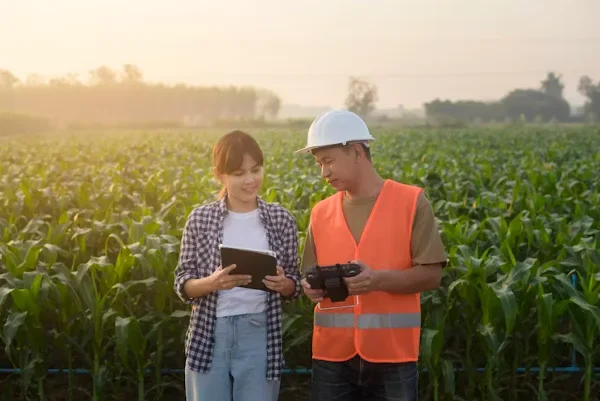
Technology is no longer optional in agriculture; it’s foundational to resilient, transparent, and future-ready Agri-logistics system. Digital tools unlock the ability to respond to climate volatility, market fluctuations, and logistical bottlenecks before they escalate.
Today’s agri-logistics must navigate an unpredictable mix of droughts, sudden demand shifts, labor shortages, and cross-border trade disruptions. Without a digital backbone, making informed, real-time decisions is nearly impossible. That’s where technologies like IoT sensors, AI models, and farm monitoring platforms come in.
For example, during the 2022 floods in Australia, the state of New South Wales leveraged satellite data and remote sensing tools to assess flood impact on croplands, enabling authorities to prioritize relief to high-risk zones within hours. This kind of agility is only possible through satellite crop monitoring systems that provide wide-scale, near-real-time insights.
Moreover, predictive tools can minimize future disruptions. AI-driven yield prediction models help agribusinesses and cooperatives optimize delivery routes in anticipation of drought-related shortages, cutting logistical delays.
From the retail end, blockchain technology implemented by Carrefour in Europe now allows customers to trace chicken, milk, or tomatoes back to the farm in seconds, building consumer trust and ensuring compliance with safety standards. What technologies are utilized in the chain, and what is their significance? Let’s explore!
Key Technologies Transforming Agricultural Distribution Systems
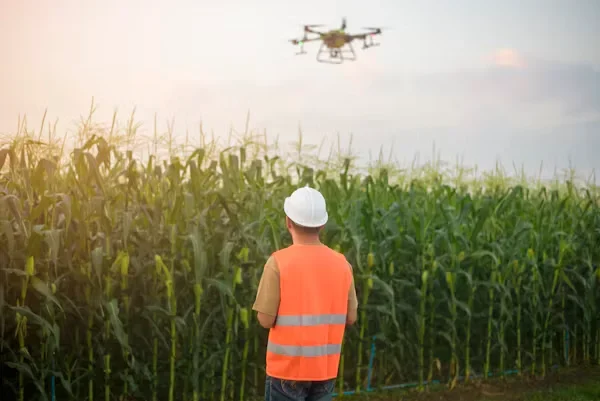
Today’s most forward-thinking agricultural enterprises are growing crops and building intelligent, self-regulating logistics networks. The technologies driving this shift are redefining what’s possible in food logistics. Core innovations powering the shift:
- IoT and Smart Sensors. Networked devices embedded in fields and silos monitor everything from soil pH to ambient temperature, feeding live data into farm tracking dashboards. These insights support proactive crop health monitoring, reducing disease outbreaks and yield variability.
- Satellite and Drone Surveillance: Advanced remote crop monitoring systems offer granular field-level intelligence. NDVI-based satellite tools flag nutrient stress before symptoms are visible to the eye, giving farmers a critical window for intervention.
- Blockchain-Driven Traceability: Blockchain records every interaction in a timestamped, verified, and unalterable manner. This deters fraud, ensures fair trade compliance, and accelerates product recalls when needed.
- AI and Machine Learning: AI and machine learning algorithms crunch weather data, market signals, and field metrics to optimize planting schedules, allocate labor, and forecast market demand, minimizing surplus and shortages.
- Autonomous Farming and Robotics: Automation boosts harvesting, sorting, and packaging precision. Combined with farm monitoring systems, these tools help maintain uniform product quality and reduce dependency on seasonal labor.
- Cloud-Based Agriculture Platforms: Centralized farm crop software integrates satellite data, weather models, logistics, and pricing in one platform, giving stakeholders a single source of truth across the entire chain.
A standout example is Kenya-based Twiga Foods, which uses mobile and AI-based ordering systems to connect smallholder farmers directly with vendors. By digitizing the middle steps, Twiga considerably reduced spoilage rates and cut prices for urban consumers, all while ensuring fair compensation for producers. Now, let’s examine the challenges of integrating technologies into the agribusiness value chain.
Roadblocks to Digital Transformation in the Agri-value chain
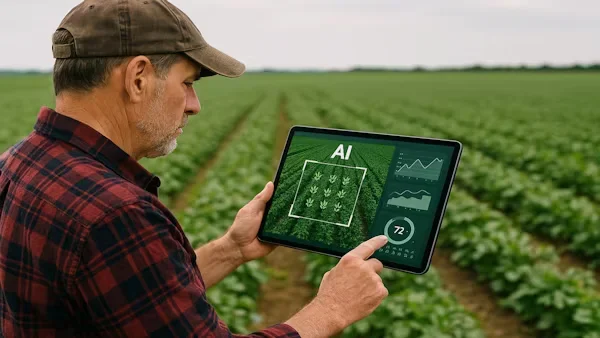
Despite growing momentum, integrating technology into agricultural systems remains a steep climb for many regions and enterprises. Key challenges include:
- High Upfront Costs: Purchasing and maintaining IoT hardware or AI software requires capital, often unavailable to smallholder cooperatives.
- Infrastructure Gaps: Weak mobile networks, limited internet access, and lack of rural electrification can cripple even the best digital solutions.
- Skills and Training Deficits: Many rural stakeholders lack the digital literacy to engage fully with tech-enabled platforms.
- Legacy Resistance: Longstanding habits and fear of automation frequently slow adoption among traditional operators.
Government and NGO-led interventions are vital. Programs like India’s Digital Agriculture Mission and Africa’s 50×2030 Initiative actively invest in rural broadband, farmer training, and data-driven planning, helping bridge the divide between innovation and implementation. What lies ahead for technology in farming? Let’s reflect on this!
The Future: Smarter, Safer, and More Sustainable Agri-logistics System
The next decade will see agricultural operations networks evolve into predictive ecosystems powered by real-time data, automation, and transparent governance. We are entering the era of autonomous logistics, drone-enabled inspections, and decentralized trading systems.
Emerging trends to watch:
- Real-time farming tracking through 5 G-enabled sensor networks;
- Integrated dashboards combining blockchain, weather forecasting, and dynamic pricing;
- Carbon tracking is embedded into sustainability reporting.
- Mobile-first remote farm monitoring for smallholders.
According to McKinsey & Company, enhanced connectivity in agriculture could unlock up to $500 billion in added value by 2030 through reduced waste, better forecasting, and improved farmer incomes.
In a world of food insecurity and climate extremes, embracing crop monitoring software and intelligent agri-logistics is no longer just a competitive edge; it’s necessary. Collaboration among tech providers, policymakers, and agricultural communities is key to harnessing this future. The tools exist; now, it’s time to scale them with vision and urgency.
Author: Vasyl Cherlinka
Vasyl Cherlinka is a Doctor of Biosciences specializing in pedology (soil science), with 30 years of experience in the field. With a degree in agrochemistry, agronomy, and soil science, Dr. Cherlinka has been advising on these issues in the private sector for many years.

